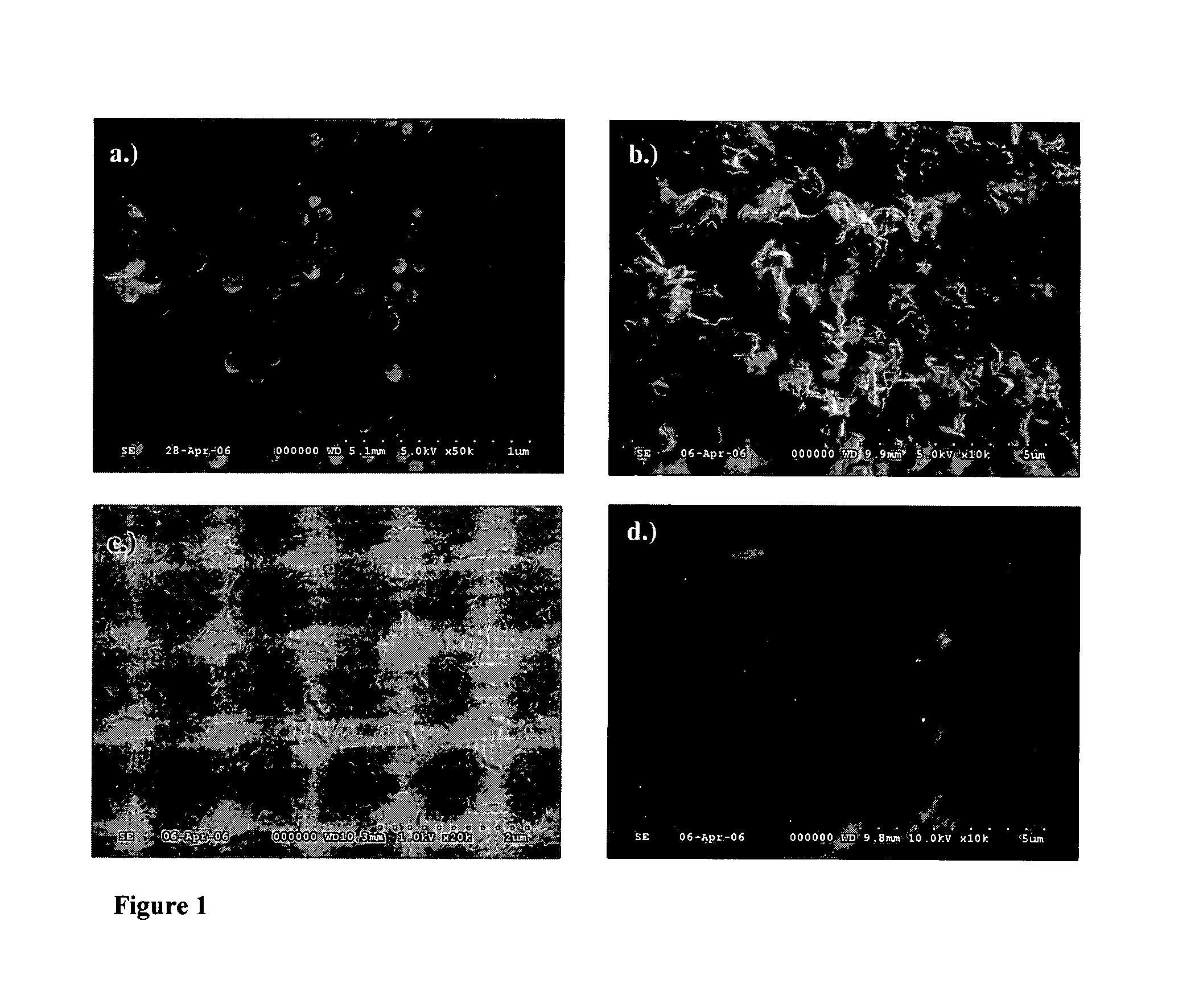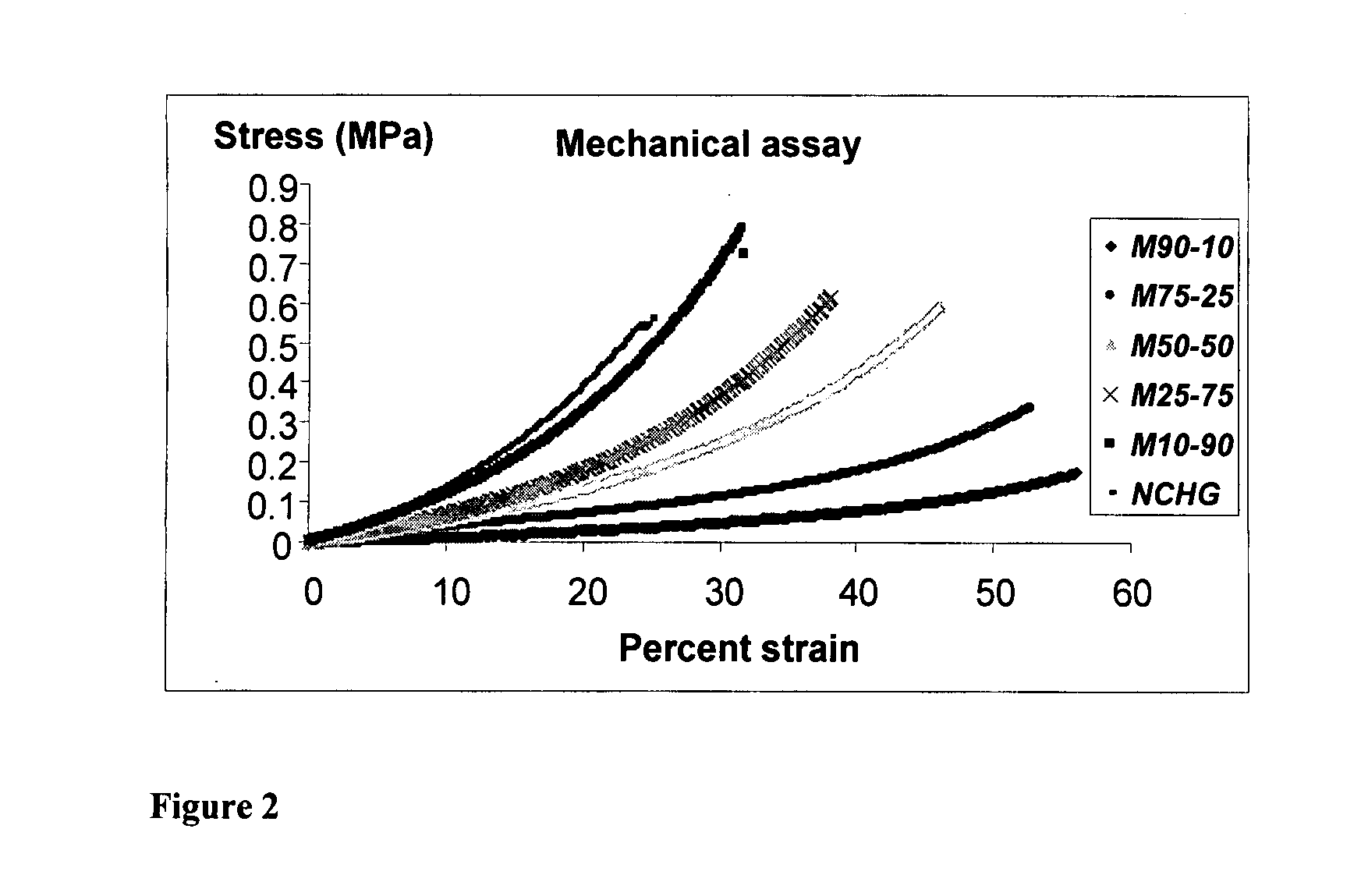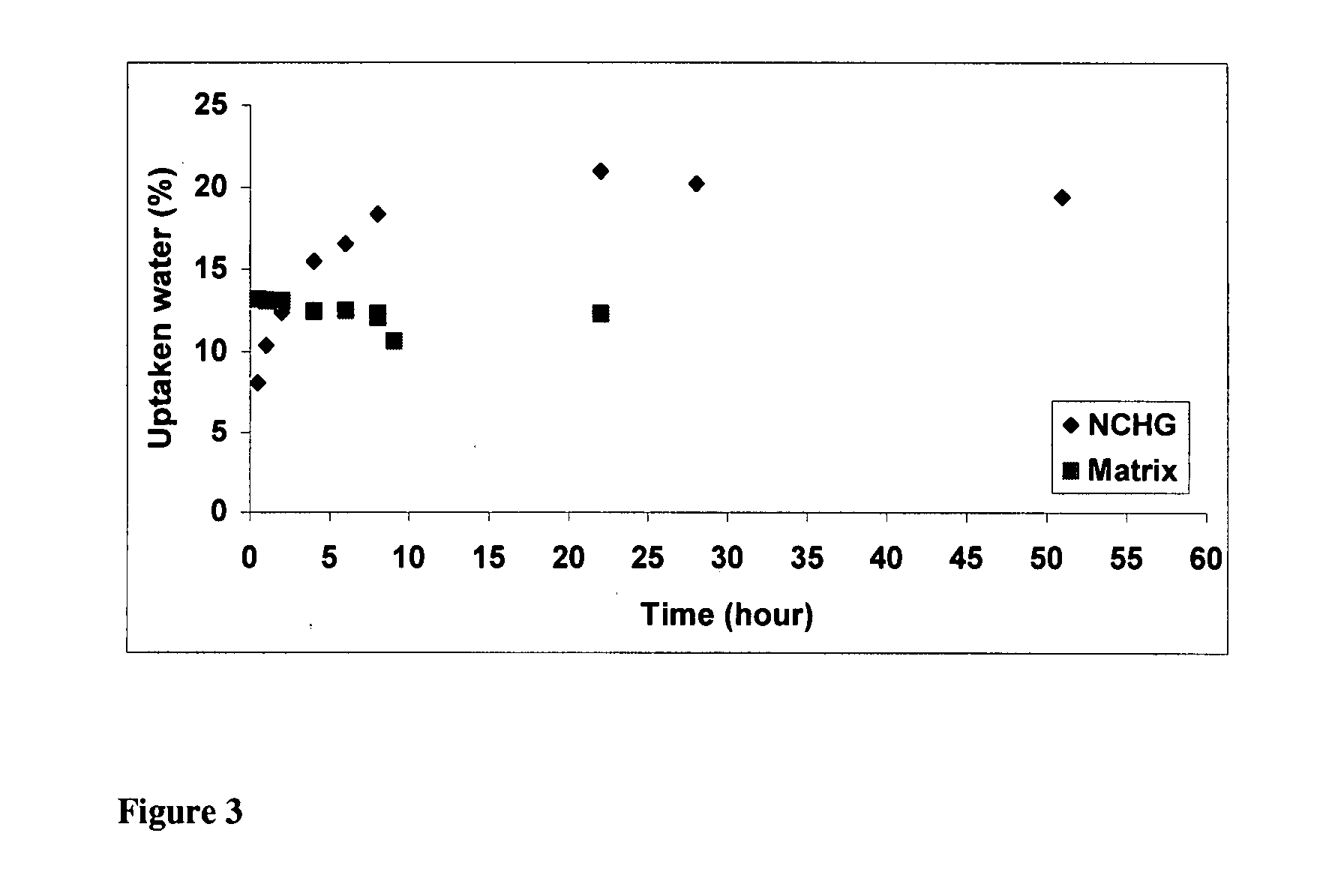Synthesis of biocompatible nanocomposite hydrogels as a local drug delivery system
a nano-composite hydrogel and nano-composite technology, applied in the field of nano-composite hydrogel compositions, can solve the problems of dramatic decrease in the quantity of detectable drugs, and achieve the effects of slow release of drugs, increased compression strength, and higher content of cross-linkers
- Summary
- Abstract
- Description
- Claims
- Application Information
AI Technical Summary
Benefits of technology
Problems solved by technology
Method used
Image
Examples
Embodiment Construction
Materials and Methods
Materials
[0012] 2-Hydroxyethyl methacrylate (97%, from Sigma-Aldrich, Steinheim, Germany) was purchased as monomer, poly(ethylene glycol) dimethacrylate (Mn:550, from Sigma-Aldrich, St. Louis, MO) as crosslinker and anthraquinone-2-sulfonic sodium salt (˜99%, Fluka AG. Buchs SG) as photoinitiator was applied. Chlorhexidine-di-gluconate, dental application grade (20% solution from Spektrum 3D, Hungary), was obtained as active substance. The composed of nanoparticles were done same monomers as the hydrogels, but the initiator was potassium persulphate (Reanal Co., Budapest, Hungary, 98% purity). Sodium-lauryl sulphate was applied as an emulsifier, and n-buthanole as cotenside were purchased from Spektrum 3D, Hungary. All materials were used as received without further purification.
Preparation of Nanoparticles
[0013] HEMA and PEGDMA monomers were dispersed in deionised water (40 ml) containing sodium lauryl sulphate (SLS), an anionic surfactant. The overall c...
PUM
 Login to View More
Login to View More Abstract
Description
Claims
Application Information
 Login to View More
Login to View More - R&D
- Intellectual Property
- Life Sciences
- Materials
- Tech Scout
- Unparalleled Data Quality
- Higher Quality Content
- 60% Fewer Hallucinations
Browse by: Latest US Patents, China's latest patents, Technical Efficacy Thesaurus, Application Domain, Technology Topic, Popular Technical Reports.
© 2025 PatSnap. All rights reserved.Legal|Privacy policy|Modern Slavery Act Transparency Statement|Sitemap|About US| Contact US: help@patsnap.com



